Denmark will acquire 16 additional F-35 Lightning II fighter jets, bringing its total fleet to 43 aircraft, according to the Danish Ministry of Defence.
The decision, agreed by the government and the parties to the Defence Agreement, represents a major expansion of the Danish Air Force’s combat capability.
Defence Minister Troels Lund Poulsen said in the press release: “With the acquisition of 16 additional F-35 fighter jets, we deliver a historic strengthening of the Danish Air Force and the Danish Armed Forces. I am very pleased that we have concluded this agreement on the additional F-35 acquisition, which significantly increases the combat power of the Danish Armed Forces.”
The Ministry of Defence will now enter discussions with the F-35 Joint Program Office regarding acquisition details, including the potential for accelerated delivery to enhance readiness.
General Michael Hyldgaard, Danish Chief of Defence, said: “Expanding the fleet of F-35 fighter jets is a key decision in the build-up of the Danish Armed Forces. The F-35 fighter jets are already a crucial operational part of both operations and assertion of sovereignty. With the decision to acquire 16 additional fighter jets the combat power, flexibility and Danish contribution to NATO is increased significantly.”
The expanded acquisition package will include spare parts, flight and threat simulators, training systems, deployment kits, braking parachutes, facilities and staffing. Denmark also plans to purchase a number of unmanned Collaborative Combat Aircraft to complement the F-35 fleet.
Denmark originally ordered 27 F-35s under a 2016 agreement involving multiple political parties. The first aircraft arrived in-country in October 2023 at Fighter Wing Skrydstrup, with six more based in the United States for training. The initial 27-aircraft order is due for completion in 2026, and the F-35 is expected to reach full operational capability in 2027.


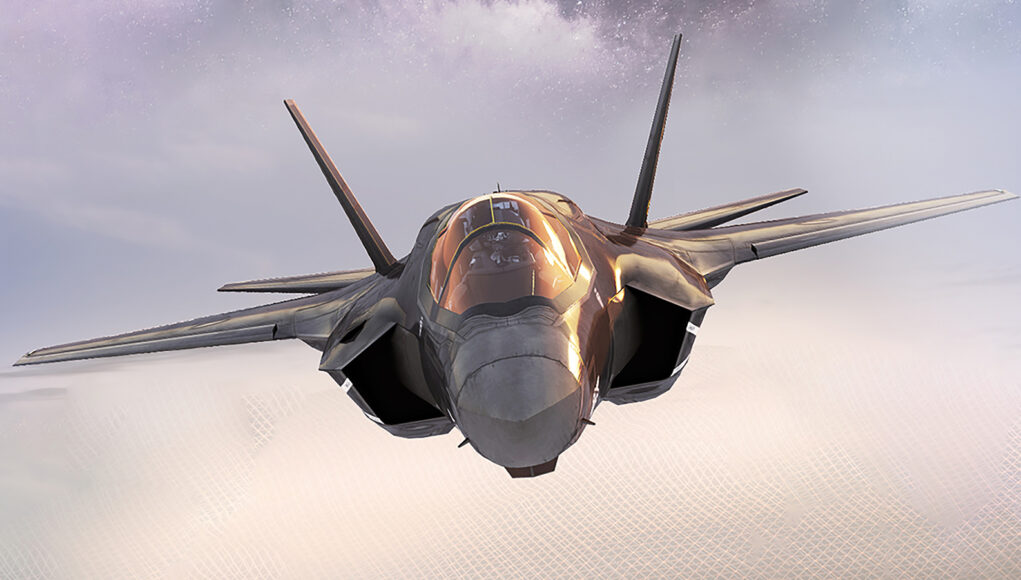


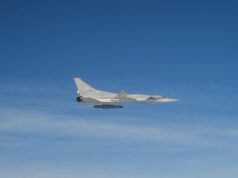
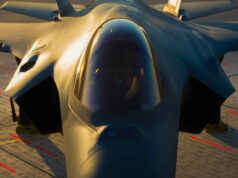

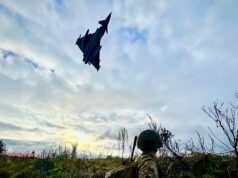
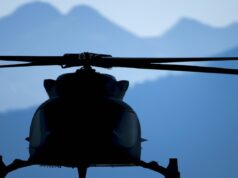
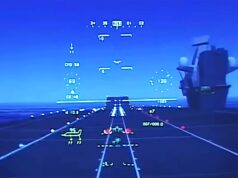
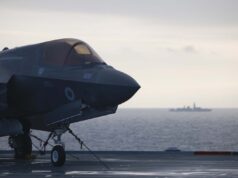
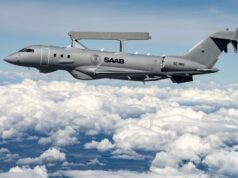

It’s a shame that Europe has little to contest the F-35 among its domestic fighter industry. The Rafale is simply outperformed and has suffered from blows to its reputation following the losses in India earlier this year. The Gripen is getting old, and is limited by its small size. The Typhoon has suffered immensely from a lack of investment and the lethargic pace of the upgrades, leading to a fighter that has always seemed technologically ‘five years behind’.
The same can be said for all three of the Euro-canards in actuality. They were, perhaps with the exception of the Gripen, brought into service far later than what was required for them to be effective. The Typhoon was born into a world in which the Americans had already raised the bar significantly, to the point that peer-performance simply was never an option.
The F-35A is by almost all accounts the more adaptable, better-performing, better-supported, more modern, better-equipped, more advanced, more survivable aircraft, all whilst being significantly cheaper than any of the Euro-canards at the point of purchase. That price is only going down.
Roll on Tempest.
Eu Canardly believe it !!!
🙂 one of your best halfwit
True but F35 suffers from lack of indigenous weapons integrstions
😁
Easy to say this in retrospect but there is no way the F-35 would have been the answer to the questions posed back in the days it was devised. It’s the best bad solution presently available but with the lack of weaponry available to it barely at best.
Totally agree.
You’d never do it that way these days….
Like any Gen1 effort….
Lack of non-American weaponry maybe, but most F-35 buyers don’t care about that. Meteor better than AMRAAM D in some ways, Spear 3 better than JAGM in some ways, but American weapons have understandably been integrated first, given they are buying more than 30 times more planes than us (not to mention all the other F35 customers who also don’t care about British weapons integration).
Thank you it’s always nice to have a representative of the Lockheed Martin sales team here. Mixing some truth (hey we are comparing two different generations of aircraft here after all) with a seasoning of arguable and ‘alternative’ facts with a good dose of hyperbole seems, to be the way of life these days when more rational objectivity would be a better perspective when making comparisons in my view.
Let’s not forget the F-35 itself has come in for some relentless criticism, the airframe itself in many ways is inferior to those aircraft you mention, only the add ons be it stealth, much troubled electronic suites and its ability to work with external sensors, platforms and technology gives it that big advantage over those others, without those assets inherent in a 5th Gen aircraft it would be a near sitting duck to most 4 or 4.5 Gen aircraft. But yes those assets are not to be disparaged and I don’t I just put things into perspective give. The aircraft in reality as a 5th Gen platform is deeply compromised, its future far from certain, it’s restricted by a single engine, poor range, poor aerodynamics with associated limited speed and only average manoeuvrability, poor if improving availability and of course an appalling developmental record. This is not something to be applauded, it’s just the best bad option out there till better aircraft come along. Presently it has no real competitors, so yes it’s the best available solution undoubtedly, but still we better hope those ‘add ons’ as I call them stay sustainable and effective in time of true conflict especially in the next more testing decade. So let’s not be complacent, the US is already recognising its limitations and we need to do the same and make sure (as will NGAD hopefully) Tempest takes things a good stage further because I fear China will be moving ahead otherwise and perhaps decisively so. The F-35 is the best option but don’t let’s over egg the mix.
As an aside having made the analysis above, I am concerned for France (if only indirectly) in that as things stand, they not only don’t operate a 5th Gen fighter aircraft (because I recognise the limitations of 4/4.5 Gen aircraft) but won’t have an equivalent 5th Gen or better aircraft until the 2040s even if they finally get their act together, how do they cope with that scenario?
Lockheed sales reps famously love to support independent foreign fighter programmes and can often be heard saying ‘Roll on Tempest’ or ‘It’s a shame that Europe has nothing to contest the F-35 among its domestic fighter industry’, right…
The reason I compared them to the F-35 despite them being different generations is because Europe doesn’t having anything comparable. That’s the whole point of my comment.
‘the airframe itself in many ways is inferior to those aircraft you mention, only the add ons be it stealth, much troubled electronic suites and its ability to work with external sensors, platforms and technology gives it that big advantage over those others, without those assets inherent in a 5th Gen aircraft it would be a near sitting duck to most 4 or 4.5 Gen aircraft.’
So, without the assets that make it a more potent aircraft than older European aircraft, the F-35 would be a worse aircraft than those older European aircraft? Who would’ve guessed?
‘it’s restricted by a single engine, poor range, poor aerodynamics with associated limited speed and only average manoeuvrability, poor if improving availability and of course an appalling developmental record.’
A single engine that alone is vastly more powerful than the dual engines of both the Typhoon and Rafale. A shorter range, yes, but given it’s stealth capability, the F-35 can afford to fly much higher, and therefore more efficiently, than comparative non-stealthy fighters, when under a combat situation. Agility is a declining pursuit in the modern era of air combat. Have you seen the designs flying over in China? Neither put a premium of snappy flying. In the era of BVR combat, moderate manoeuvrability is all you need. I can’t fault your assessment of the development, but I would encourage you to take a look at the availability of other modern fighters when they first entered service. They’re also not brilliant.
‘This is not something to be applauded, it’s just the best bad option out there till better aircraft come along. Presently it has no real competitors, so yes it’s the best available solution undoubtedly, but still we better hope those ‘add ons’ as I call them stay sustainable and effective in time of true conflict especially in the next more testing decade.’
See, this is what baffles me. You opened your comment with an insult, and yet once you’ve got past your rant, you’re just paraphrasing what I’ve already said in my original comment above. Make it make sense. It’s like you agree with me, but have talked yourself into a corner looking for a debate that isn’t there. I mean, you say: ‘The F-35 is the best option but don’t let’s over egg the mix.’
This is literally the whole point of my comment. I’m saying that it’s a shame we have nothing to contest the F-35, and I’m encouraging accelerating Tempest to contest American developments. You’re agreeing with me.
‘As an aside having made the analysis above, I am concerned for France (if only indirectly) in that as things stand, they not only don’t operate a 5th Gen fighter aircraft (because I recognise the limitations of 4/4.5 Gen aircraft) but won’t have an equivalent 5th Gen or better aircraft until the 2040s even if they finally get their act together, how do they cope with that scenario?’
Absolutely. It’s going to be a major issue, especially onboard their carriers. Their current plans intend to make large scale use of a variety of stealthy drones to complement their Rafale F5.
Didn’t seem to have stopped it doing it’s stuff over Iran . Speaking with fast jet mates in the office they really like it and quote it’s stealth , fully networked capability and sensor suit as giving it a real edge when up against Typhoon .
Not sure about the cheapness. The Danish order for 16 F35A includes spares and there is a reference to CCA drones. But the cost is £3.2b.
For the UK, building more Typhoons ( as Germany,italy and Spain are doing ) must be a cheaper option than F35, with far greater British content.
It is disturbing that Denmark with population of 6m and gdp @ 12% of Britains will have a third as many combat aircraft.
Whatever the UK defence budget, the result is punching below our weight, not above it.
Remind me how many aicraft carriers Denmark has or nuke subs for that matter…..
Nor does the Danish Airforce have any of its own enablers it has to share multi national fleets. I’m quite sure the detractors don’t think that the UK has the right amount of its own enablers, and perhaps it doesn’t, but the option of deleting all of these capabilities and raising the ratio of British to Danish combat aircraft to the magic level, is not a workable solution either.
In an alternate reality where Britain didn’t go in early on the F35, and so benefit from tier 1 involvement in its production, similar voices would be bemoaning the fact that tiny little countries like Denmark and Norway, with 6 Million people, can afford fancy fifth generation aircraft when pathetic old Britain can’t.
The point is the small relative size of the UK combat air fleet given a defence budget now over £60b.
In 2010, it was @ 320, now @140.
I have to say I have huge doubts about any lessons we can take from Rafale in India. It is far easier to believe their operation of them was incompetent
I recall when the Typhoon was being rolled out for the first time. It was attacked mercilessly as being an outdated relic of the Cold War, not fit for purpose in the modern era. That was just the press, imagine if we had forums and comment sections to the same extent we have today.
How many F35’s in Europe now ? Anyone know ?
Wiki says @ 218 so far.
F35B is still a veritable white elephant. Weapons carriage very limited still. Massive engine and software issues. And very expensive.
Indeed as things stand we have an aircraft than can get to where it needs to be but not do very much once it gets there. The 4/4.5 Gen aircraft can’t get there but if only they could, are equipped to do a lot once there. All a bit unbalanced.
“Vertical White Elephant” even 😁
So in terms of aircraft ordered we are well down the list in numbers and timescale, having to share our 47, when they finally arrive, btween the RAF and RN. We will have 12 A variant for “training” and another 15 B (maybe) by 2033. Meanwhile, we have to send the aircraft out with hardly a modern stand off weapon betwwen them. Brilliant.
Yes that’s the true stripped down reality, no point painting it with lipstick.
The USA will soon have AARGM-ER & JSOW-C integrated on to block 4 F-35. An off the shelf partial solution for UK F-35 if we wanted it.
sad but equally sadly true…
Denmark will have 43 F35’S whilst Britain with a huge EEZ including overseas territories, much bigger economy / population and approx £60 billion defence budget has so far ordered 48, with another 27 at some far off point.
Across the board as European defence procurement starts to head upwards it makes British efforts seem hollow and lacklustre.
Yeah but we also have 100 Typhoons.
But I get your drift.
Norway has 52 F35A, Netherlands 46 with another 12 on order, Singapore has 20 on order but also 40 very capable 4th gen F15E and 59 older F16D+ all of which are smaller countries with significantly smaller defence budgets than the UK.
While Australia has 72 F35A, 24 Super Hornets and 12 Growlers almost matching the UK fast jet numbers and with a greater range of stand off weapons including JSM and LRASM for maritime strike but supported by an active armed CCA loyal wingman program about to reach IOC in 2026, more Wedgetails, more P8s, boom equipped tankers and advanced ISR/EW platforms including Triton and Peregrine.
By contrast UK air power relative to the countries global ambitions and responsibilities is looking fairly anemic.
Exactly, everything has to measured again the relative size of the country and its ambitions.
150-170 F35’s and Typhoons would be fine if purely for UK air defence, but we’re contributing to NATO, defending British Overseas Territories, committed to various other defence agreements and looking to project power via the CSG.
And across the spectrum…….3 Wedgetail, 9 Poseidon, 148 tanks, MCM/survey/amphibious fleets cut to shreds, medium helo’s scrapped without a replacement lined up, down to 6 SSN’s and 8 frigates with only small increases on the horizon, ever shrinking manpower etc etc.
If we didn’t have such global ambitions and spend £60 billion on defence PA it’d make sense.
Not even champagne tastes on brown beer budgets!
Now here is an interesting aside. This order is no doubt aimed at making a strong point to Trump and his Greenland annexation ambitions and some of these will be based on that Danish possessions soil (make that ice)-so watch out Don, we Danes are no pushover and also valued customers!!
It might just save their “Bacon”.
A “Rasher” Decision.
Not holding “Back”
Armed with “Star Streaky” missiles.
Hope It doesn’t go “Belly” up
That’s enough to chew over !
This is getting a bit embarrassing for the RAF and UK plc more generally. Bring on the Defence Investment Plan (anyone when it’s meant to be published, other than just Autumn 2025?). Hopefully there are a few pleasant surprises for us all!
Oh goody goody, I like surprises, how about a T32, maybe a Vixen, Mosquito, T91, T83, 2 more Wedgies ?
They can start by finishing the medium helicopter program. Desperately needed, not just a vanity comparison project.
Yes. But what did anyone expect with this government?
I’d have to ask, where is the new money?
New money would be welcome obviously, but I’m still astounded how little bang for our buck we get with our current budget! Defence nuclear is a big part of that, but even when you take that into account, our conventional budget is still much bigger than Italy’s for example, yet they are due to have more personnell, more F35s, more Typhoons, and a bigger navy (even two carriers, albeit smaller than ours).
I did not expect anything from Labour on defence. I wouldn’t be surprised if one of Reeves money saving methods is to push out some defence spending increases beyond current promised time frames.
Chagos payments.
Afghan rehoming.
The SIA moved into the 2.5%
Overseas bases.
HMGs obsession with sending as much money to the MIC as possible via lucrative support contracts while the military go without kit.
General incompetence chopping, changing, delaying, reducing, which impacts build rates and kit buys to save money but actually long term costs more.
Maybe the Italian treasury are better?
Maybe the UK has a whole range of super weapons and underground bases that has drained money away we know nothing of, pigs might fly too.